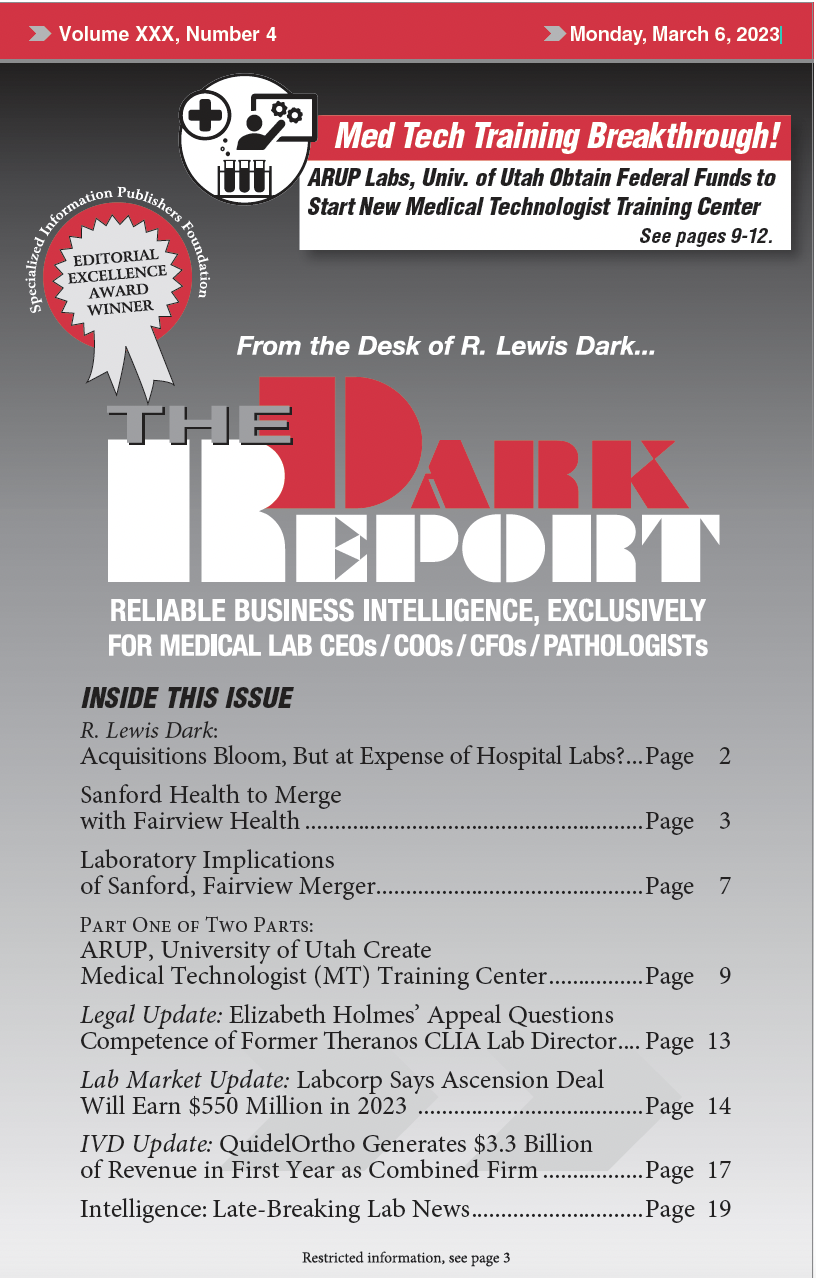IN OUR FEBRUARY 13, 2023, ISSUE OF THE DARK REPORT, we analyzed the 2022 full-year and Q4 earnings of major IVD companies. At the time our prior issue went to press, QuidelOrtho had not yet reported its year-end results. This is the first time that San Diego-based QuidelOrtho released full-year financial results as an integrated …
QuidelOrtho Earns $3.3 Billion in First Year as Combined Firm Read More »
To access this post, you must purchase The Dark Report.


